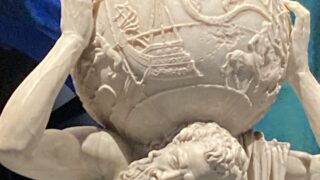3月3日はひな祭りです。女の子の健康と幸せを願う行事です。
March 3 is the Girls’ Festival. It is an event to wish for the health and happiness of girls.
ひな祭り
上の写真はひな人形です。テレビやネットで見たことがあるかもしれませんね。女の子のいる家庭では、2月の中頃から3月3日まで、ひな人形を飾ります。とてもきれいな人形ですね。最近では、下の写真のような、小さくてかわいいひな人形もあります。家族の女の子の健康と幸せを願って、ひな人形を飾ります。
The photo above is hina dolls. You may have seen them on TV or the Internet. Families with girls display hina dolls from the middle of February until March 3. They are beautiful dolls. Recently, there are also small and cute hina dolls like the one pictured below. Hina dolls are displayed to wish for the health and happiness of the girls in the family.
| 飾る | かざる | display |
| ~を願って | ~をねがって | with a wish for ~ |

下の写真は去年作ったちらしずしです。炊き立てのご飯に酢と砂糖と塩を少し入れて、酢飯を作ります。酢飯の上に、さしみや焼いた卵をのせます。とても華やかですが、意外と簡単に作れるので、新鮮なさしみがある時に作ってみてください。今日も夕ご飯にちらしずしを作ります。
The picture below is the chirashizushi I made last year. Sushi rice is made by adding vinegar, sugar, and a little salt to freshly cooked rice. On the sushi rice, top with sashimi and a baked egg. It is very glamorous but surprisingly easy to make, so try making it when you have fresh sashimi. I will make chirashi zushi for dinner today as well.
| 炊き立ての~ | たきたての | freshly cooked ~ |
| 酢飯 | すめし | vinegored rice |
| 華やか | はなやか | gorgeous |
| 意外と | いがいと | unexpectedly, surprisingly |
| 新鮮な | しんせんな | fresh |

下の写真はひなあられです。お米で作ります。ポップコーンと作り方が似ています。砂糖で味つけされた、少し甘いお菓子です。ピンク、白、黄色、緑の色が季節を表しています。かわいいお菓子ですね。女の子が一年を通して幸せであることを願って、この色になったと言われています。
The picture below is hina-arare. It is made with rice. The process is similar to that of making popcorn. It is a slightly sweet candy flavored with sugar. The pink, white, yellow, and green colors represent the seasons. It is a cute sweet. It is said that the colors were chosen to wish girls happiness throughout the year.
| 一年を通して | いちねんをとおして | throughout the year |

この写真は甘酒です。酒という漢字が使われていますが、アルコールは入っていません。米麹というものから作る甘い飲み物です。米麹は、蒸したお米に麹菌というカビをつけて発酵させて作ります。みそやしょうゆ、みりんといった伝統的な調味料を作るのに欠かせないものです。
This picture shows amazake. Although the kanji character for sake is used, there is no alcohol in it. It is a sweet drink made from something called rice koji. Rice koji is made by fermenting steamed rice with a fungus called koji mold. It is essential for making traditional seasonings such as miso, soy sauce, and mirin.
| 甘酒 | あまざけ | amazake |
| 米麹 | こめこうじ | rice malt |
| 蒸す | むす | steam |
| 麹菌 | こうじきん | fungus |
| 発酵させる | はっこうさせる | make it furmented |
| 調味料 | ちょうみりょう | seasoning |

厄払い・やくばらい・ward off bad luck
生きていると、よくないことや悪いことがいくらでもありますね。昔の人はそのよくないことを起こすものを厄とよんでいました。その厄を人形に移して、人形を海や川に流すことで、厄を払うことができると考えていました。これがひな人形の始まりだと考えられています。
今は人形を川に流すことはありませんが、人形は人の厄を移されたものなので、3月3日を過ぎたら、ひな人形はすぐに片付けないといけないと考えられています。
この「厄払い」という概念は、日本の古典を理解するのにとても大事な考え方です。
In life, there are plenty of things that are not good. In the old days, people called the things that cause bad things “yaku.” They believed that by transferring the bad luck to dolls and throwing the dolls into the sea or rivers, they could drive away the bad luck. This is considered to be the origin of Hina dolls.
Nowadays, dolls are not thrown into rivers, but it is believed that dolls should be put away as soon as March 3rd is over. That’s because dolls are the ones to which people’s bad luck has been transferred.
This concept of warding off bad luck is important to understand the Japanese classics.
| 厄 | やく | bad luck |
| 厄を移す | やくをうつす | transferr the bad luck |
| 厄を払う | やくをはらう | ward off the bad luck |
| 概念 | がいねん | concept |
今日もここまで読んでくれてありがとうございました。3月になりましたが、また寒い日が戻ってきました。みなさんもお体に気をつけてくださいね。
令和六年三月三日




















